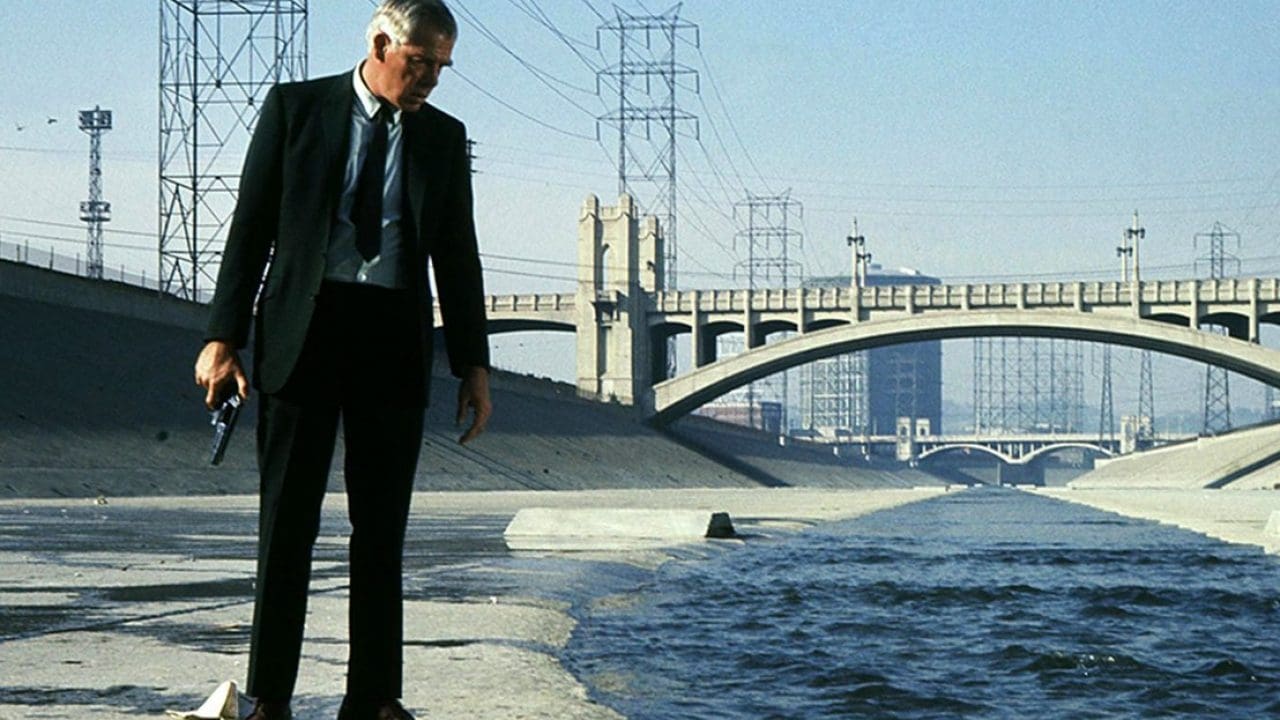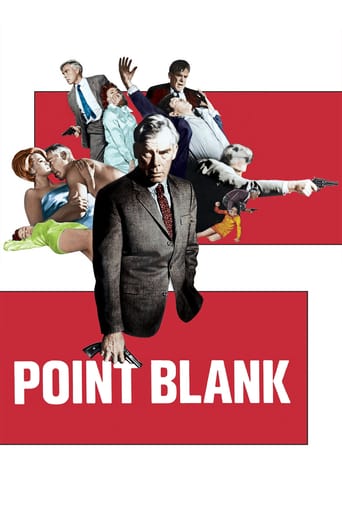

It’s an especially fun movie from a director and cast who are clearly having a good time allowing themselves to let loose.
... View MoreBlending excellent reporting and strong storytelling, this is a disturbing film truly stranger than fiction
... View MoreA film of deceptively outspoken contemporary relevance, this is cinema at its most alert, alarming and alive.
... View MoreThis is one of the best movies I’ve seen in a very long time. You have to go and see this on the big screen.
... View MoreI found this in the library and thought it would be interesting. It wasn't. It was slow, confusing, and boring, and I gave up after a half hour.The film opens with an improbable scene where Walker and an old friend are at a fancy reunion, and the friend pushes Walker to the ground, screaming about his badly needing help-and everyone else stands around obliviously. The movie may be intended to be an artistic noir, but this is just ridiculous. Then there is the operation at the now-closed Alcatraz prison, which goes off properly, but the "friend" tries to kill Walker and steals his wife. Somehow Walker survives and recovers, and meets with his ex-wife, who says how remorseful she was over his supposed death. There are more scenes, but the whole thing was so full of flashbacks, improbable scenes, and slow pacing and lack of chemistry that I turned it off.Why people praise this, I don't know. There's no tension and the movie tries to be "arty", but ends up looking ridiculous. The movie fails both as entertainment and high art.
... View MoreLee Marvin was great at not acting. In every movie, he stands there silently watching all the other actors until eventually he does something (usually very slowly). Rumor has it that Keanu Reeves studied his method religiously.Marvin plays a dead guy -- no, a dying guy -- no, a guy who almost died -- even the director said he didn't know and didn't care. Anyway, Marvin gets double-crossed by his buddy; so Marvin spends his time either bumbling his way into unintentional deaths or watching other people murder people. One highlight is when the hit-man is ordered to kill Marvin and instead kills the very guy who ordered the hit. The hit-man can pick off a moving target at great distance, but apparently he had trouble seeing Marvin pushing his boss out into the open and he had trouble seeing that his boss was not Marvin. Until later. Then he reported to the next higher boss that he killed his boss because he was there instead of Marvin. Good reasoning.And Angie is great at -- well, at being a model who gets a few lines. Her character learns that her sister just died due to Marvin scaring the holy heck out of her. So she leaves her sister to rot on the floor and goes off with Marvin. She gets to wear a few garish outfits and towards the end, for no apparent reason, she goes berserk on Marvin and then sleeps with him.The bad guys are a trip. "We don't have cash. We use checks. We can't get you your money. Only the accountant writes checks." That's what they keep telling Marvin, and apparently, it's not their concern whether Marvin kills them. They just know that they don't have cash.They threw out the script. They only liked the main character. I don't think they wrote a replacement script. I imagine each day on the set, they told Marvin to stand over there and don't say anything because that's mostly what he did.Marvin can't carry a movie. He can be great as a supporting character with his one-dimensional non-acting, but that's all. Dickinson certainly can't carry a movie. She is eye candy and nothing more. This is supposed to be an action movie, and she is the second lead playing against a guy who doesn't act, emote or move any facial muscles. That's much too much for her. She would be better as the second banana's love interest.Marvins stands and stares. Dickinson has boobs. The director had no script. That's about all.Strangely enough, because this was done like a rushed high school art project, people look for great meaning in its obvious deficiencies. No, it's not avant-garde or highly stylized. It's a bad or non-existent script with exceptionally bad editing. Is he dead? Is he alive? Is he dying? Nobody knows because (not to beat a dead horse) they didn't have a script.
... View More... and maybe that's ultimately why it failed at the box office in 1967. People generally got only one shot at the apple as far as viewing went before years passed and it got on TV. Now that you have continuous access to a film, whether via streaming or DVD, you can do back to back viewings and catch everything. 1967 was a good year for Lee Marvin at MGM, where he made two movies for the studio that have ended up in the 1,001 Movies You Must See Before You Die book, this one and The Dirty Dozen. John Boorman does some stylistically interesting things, but it's a bit too much, the flourishes calling too much attention to themselves and distracting from the story. He had become much more masterful at letting the visuals contribute to the advance of the story by the time he made Deliverance and Excalibur, IMO. These flashbacks Marvin/Walker kept having to events that had previously occurred in the movie - and in a movie that clocks in at under 95 minutes, at that - just seemed like overkill to me.I found the plot terribly confusing the first time around. The crooks were hiding out in Alcatraz, where regular tours are conducted? Heck, Marvin himself is shown on such a tour very early in the film. I had no concept of what Marvin's life was supposed to have been before the events of the movie. In the flashback where he met his wife, he appears to be a dockworker straight out of On the Waterfront. The bit where the future marrieds circle each other, locked in eye contact was kinda sexy, but the presence of all of Marvin's coworkers standing one inch away from them was weird. I also didn't understand the connection between Walker and Reese or what this incredibly crowded party was where they reunited or the other barroom scene where Reese knocks Walker to the floor and climbs on top of him to tell him how badly he needs money. These scenes didn't make sense to me at all, but they didn't ruin my overall enjoyment of the movie.I liked Carol O'Connor as the Nicest Guy in the Mob. Keenan Wynn's character I didn't get. He somehow finds Walker when no one else knows he's alive and recruits him in pursuing mutual interests. I thought for the whole movie until the final scene that he was some kind of law enforcement - a Fed, maybe. The ending is also vague, I suppose deliberately so. Wynn tells the Hired Gun to leave the bag with the money, so I guess Walker gets the money? Though we don't see it explicitly.Anyway, I just love the 60s look - the architecture, the cars, the hairstyles, the clothes. I loved the hamburger joint where Marvin and Dickinson ate with the giant windows. I loved her pad with the balcony that looked down on the living area. I loved O'Connor's sprawling retreat. I loved the technology! I guess mob millionaires had remote controls for their TVs in 1967 (Well, Jack Lemmon had one in The Apartment way back in 1960, and he was at best a middle-class schlub). Oh, yeah, I also dug O'Connor's primitive speaker phone, where he put the receiver in some kind of device so you suddenly had speaker phone.The thing I missed the most? The screenplay, in its attempt to be ultra-cool, neglects to provide wronged gangster Lee Marvin with the one ingredient that is indispensable to the sort villainous hero he specialized in, namely humor. This is one of the few Lee Marvin films that contains not one memorable zinger, delivered in that patented, guttural drawl of his. It's worth a look, but I can see why 1967 audiences didn't take to it, with only one viewing to "get it".
... View MoreThis was one of several films released at a time when English Directors were shooting not only in Hollywood but working in distinctly US genres not normally associated with roast beef and two veg and as such it is no better or no worse than any of the others. Like many prolific authors associated with one genre Donald E. Westlake, who had made both a name and a young fortune out of light-hearted crime novels, thought he'd try the real thing and created a second persona under which he published a much smaller output including Point Blank in which an ultra 'hard' man, left for dead, recovers and possibly mistaking himself for Richard, Duke of York, works his way up the hierarchy of the 'organisation', offing them systematically until he reaches the top. This is, of course, the kind of role that Lee Marvin can phone in and he brings it off to a fare-thee- well leaving the undemanding entertained with it.
... View More